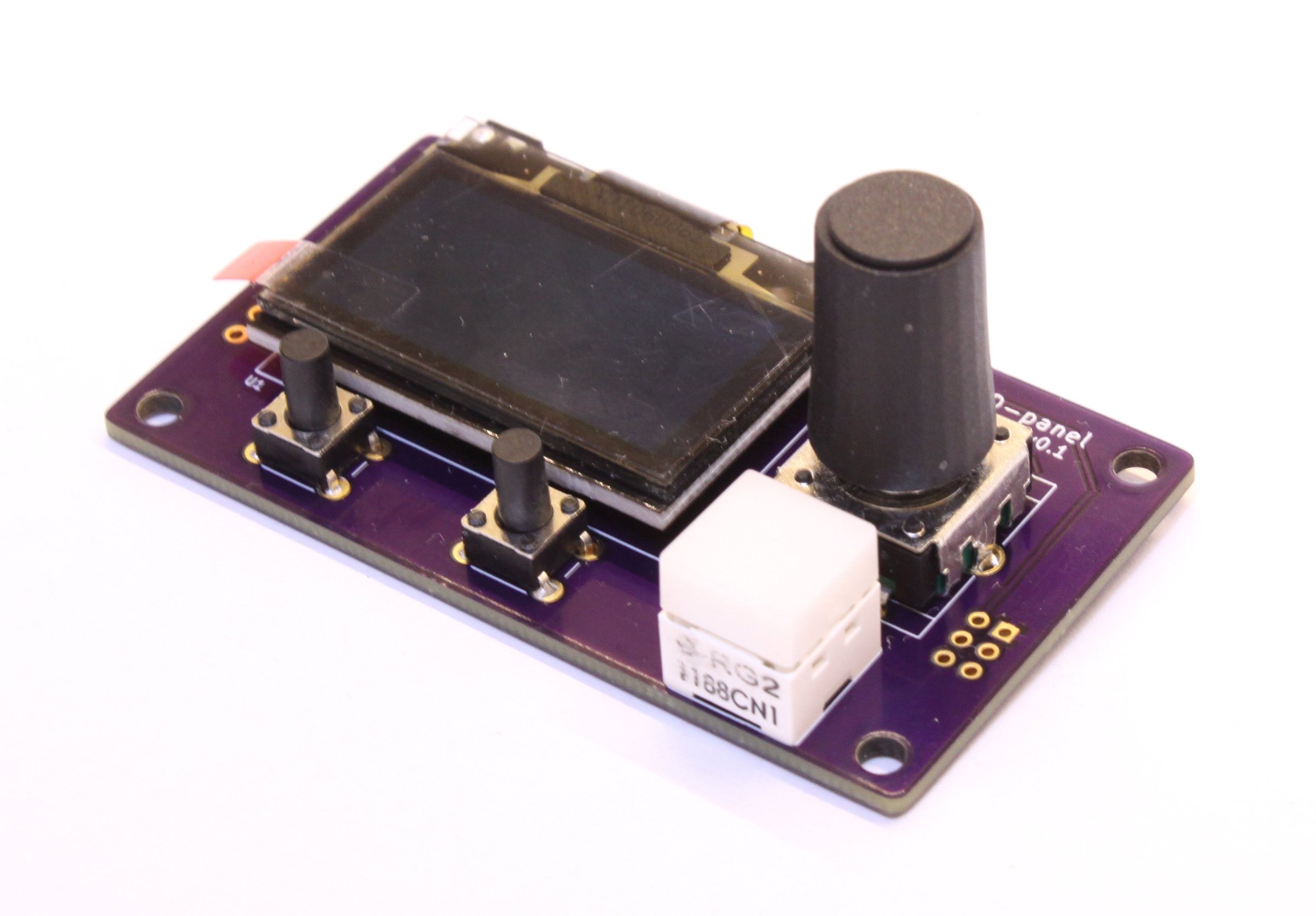This is a standalone library for LeoNerd's OLED Front Panel Module for Arduino projects or its open source/hardware clone Oled Board.
Original source code may be found on Technik-Gegg github page in LeoNerd-OLED-Module-Library repository.
This nice little module from designer Paul "LeoNerd" Evans comes with all the components needed for sophisticated Input/Output in your DIY projects by utilizing the I2C interface. This requires only 4 wires (VCC, GND, SCL, SDA) to connect it and to establish a communication with a decent speed.
This library is a simple wrapper for the I2C commands used to communicate with the device and which are described in detail in the datasheet of the module. It takes care of the handling of the I2C encoder, buttons, LEDs and buzzer, as well as the U8G2 library from Oliver Kraus for putting data onto the SH1106 OLED display.
To use this library in your Arduino project, simply place a link to this github repository into your platformio.ini's lib_deps, i.e.:
lib_deps = ...
https://github.com/gmagician/LeoNerd-OLED-Panel-Library.git
...The "basic" sample in the examples folder will show you how to use this library.
You have to create two object instances:
- one for the U8G2 library (or any other library which supports an SH1106 I2C OLED display)
- one for the LeoNerdPanel library
I.e., by using these global instance variables:
#define ENCODER_ADDRESS 0x3D // use the default address
U8G2_SH1106_128X64_NONAME_F_HW_I2C display(U8G2_R2, /* reset=*/ U8X8_PIN_NONE);
LeoNerdPanel panel(ENCODER_ADDRESS);
In your main setup() routine add the begin() method of each to initialize them:
void setup() {
...
display.begin();
panel.begin();
...
}In the master loop() of your program call the panel.loop() first, then read out button states and encoder value and react accordingly.
buttonState_t wheelBtn, mainBtn, leftBtn, rightBtn;
int16_t encoderPos;
void loop() {
...
panel.loop();
encoderPos += panel.getWheelCount();
wheelBtn = panel.getButton(LeoNerdPanel::WheelButton);
mainBtn = panel.getButton(LeoNerdPanel::MainButton);
leftBtn = panel.getButton(LeoNerdPanel::LeftButton);
rightBtn = panel.getButton(LeoNerdPanel::RightButton);
if (mainBtn == Clicked) {
...
}
...
}For sending data to the display, use the well known methods of the U8G2 library, as explained here. The simplest one is:
...
int x = 4, y = 10;
display.firstPage();
do {
drawStr(x, y, text1);
drawStr(x, y+10, text2);
...
} while(display.nextPage());
...Beside reading the encoder and the button states, you have these additional methods for handling the buzzer, the LEDs and the I/O pins of the module.
void playTone(int frequency, int duration);
void muteTone(void);
void setLED(led_t led, bool state);
void toggleLED(led_t led);
void setGPIO(uint8_t which, bool state);
bool getGPIO(uint8_t which);The I2C bus of the original device is not terminated, while the clone has its own pullup resistors! On original this means: If this module is the only I2C device on your bus, you have to terminate the bus by adding a 2.2K - 4.7K pull-up resistor to the SDA as well as the SCL line.
If you have another I2C device connected to your MCU which comes with such pull-ups already applied to SDA/SCL, you must not add another set of resistors.
- Rewritten most parts
- Removed deprecated maple
